papa-peppers guide to plant propagation – Grafting 1.0 - REASONS
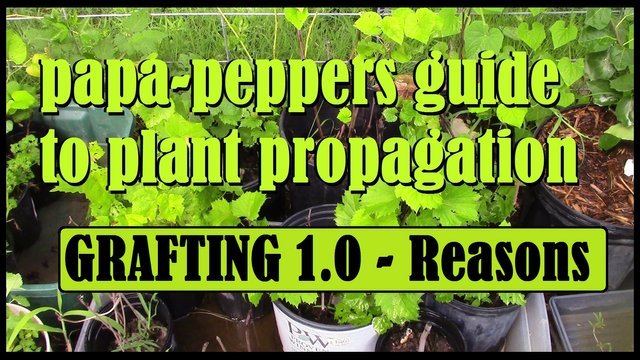
Grafting is an amazing and ancient method of plant propagation. Personally, I am absolutely amazed that it works, but since it does, I’ll do it!
BASIC CONCEPT
Basically, grafting is the process of taking a branch, stem, or bud from one plant and making it part of another plant.
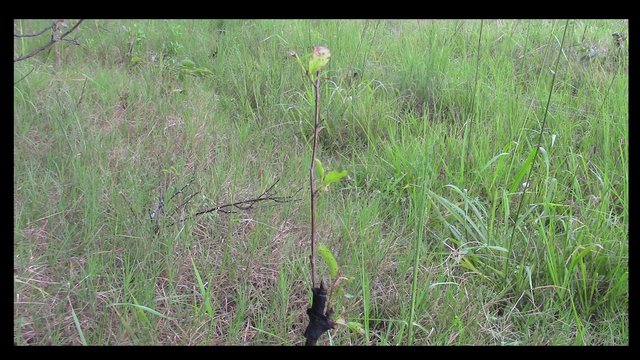
A successful graft
REASONS FOR GRAFTING
1 - POLLINATION
Often, plants are combined for a specific purpose. Sometimes, a male and female will be grafting together, in cases where the fruit-bearing female plant needs a male pollinator. Examples of this would be the GAC Fruit vine or the Kiwi Vine. Since many Kiwis and the GAC Fruit need both male and female vines to bear fruit, people will sometimes graft a vine from a male plant onto the female plant, thus reducing the number of individual plants needed from two down to one. For certain species, like the Arkansas Black Apple, two pollinators are needed. This means that if you wanted to grow Arkansas Black Apples, you would either need a minimum of three different trees, all of different varieties of apples, or one tree with two scions from other varieties grafted onto it.
2 – INCREASED PRODUCTION
Many fruit trees are self-fertile, meaning that they will produce some fruit on their own. However, even with these self-fertile varieties, adding a pollinator will increase the yield. For this reason, sometimes people will graft a scion (branch) from a good pollinator (like a Toka Plum, originally bred in 1911) onto another tree that is a good fruiter (like a Stanley Plum). Many fruit producers will have multiple varieties anyways for increased production, and grafting can be used to eliminate the need for multiple trees.
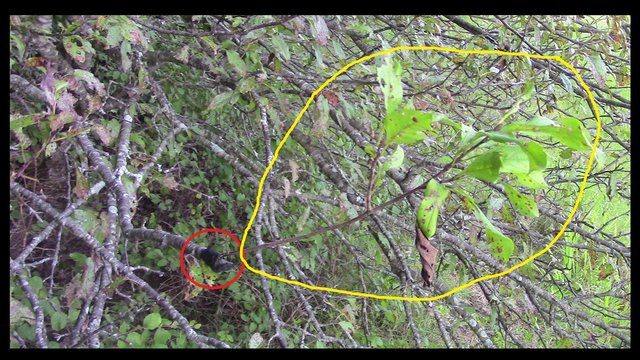
A Toka scion (yellow) successfully grafted onto a Wild Plum
3 - HARDINESS
Grafting can also be a good method to grow a variety that normally wouldn’t survive in your area. If a tree from a warmer growing zone would die in a colder zone, sometimes a rootstock from a hardier variety will be used. A rootstock is a tree which is often bred specifically for its roots, not its fruit. Besides hardiness as it pertains to temperature, there are additional factors to consider relating to the overall hardiness of a plant or tree. A particular variety of a fruit may produce well, but the root system may be more susceptible to various diseases than other varieties. If the good producer is grafted onto a disease-resistant rootstock, then, because of their combined beneficial characteristics, a stronger and better plant has been created. Many fruit trees are grafted for this reason alone.
4 – SIZE
When purchasing a fruit tree, you may notice that there are generally three different sizes in which a tree is offered; standard, semi-dwarf, and dwarf. The variety of the tree will be the same, but it is the different rootstock that leads to these classifications. A standard tree is one that, if left unpruned, will grow up to the natural maximum size for that variety. A semi-dwarf tree is one that has been grafted onto a semi-dwarf rootstock, which will reduce the maximum size of the unpruned tree. Dwarf trees have been grafted onto a dwarf rootstock which will reduce the maximum size of the tree even more. The shorter stature of the dwarf and semi-dwarf trees makes them easier to both “fit into a yard” and also to pick the fruit. Generally, dwarf trees will have the shortest lifespan, which is one thing to consider, and standard trees can easily be pruned back to keep them at a “dwarf size” if desired. Plus, the pruned branches can be used for propagation.
5 – VARIETY
Because of the genus into which certain plants and trees fit, it is possible to combine various “types” of fruit onto one trunk. Sometimes these are referred to as fruit cocktail trees, because of the multiple varieties of fruit on the same tree. Once the genus of these trees are understood, the similarities between the fruits in that classification become apparent. For instance, members of the prunus genus include Plums, Apricots, Nectarines, Peaches, Cherries, and Almonds. I know that Almonds seem like a strange variety to be one this list, but if you open the seeds of the stone fruits like Apricots, Plums, Nectarines, Peaches, or Cherries, the inner seed of all these kinds of fruit resemble an Almond, reminding us of the relationship that these trees have. Technically, not only could four varieties of plum all be grafted onto the same rootstock, one could also graft some peaches, cherries and almonds onto that same tree too. That can lead to a lot of variety on one tree. The same type of compatibility can also be used to graft Apples and Pears onto the same tree.
6 - SUCKERS
Suckers are extra sprouts that will shoot up from the root system, next to the trunk of the desired tree. They can come from both standard roots (meaning the original root system of the actual tree) or from the rootstock (meaning the root system onto which the tree was grafted). Some kinds of fruit trees that are more prone to sending up suckers can be grafted onto a rootstock without that tendency. One good example of this is the Chinese Mulberry, or Che tree. It has a tendency to grow a lot of suckers. This is not a bad thing if you are into propagation and desire to have scions for grafting, but if the goal is to have one nice tree on a single trunk it can be a labor intensive investment to have to frequently be removing the suckers. Grafting can provide a simple solution for this problem, since the Che tree can be grafted onto the Osage Orange tree. The root system of the Osage Orange lacks the suckering tendency, so the issue is eliminated.
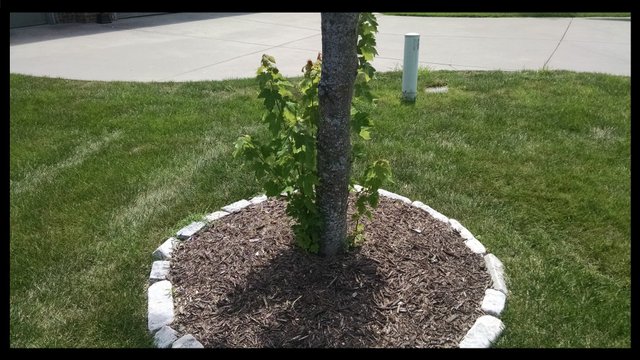
Sucker growing from the roots of a Maple Tree
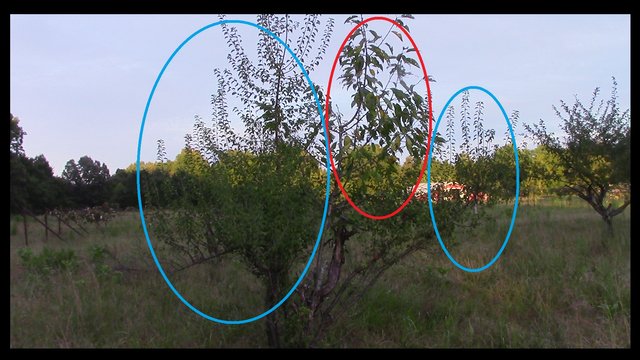
Suckers from the rootstock (blue) have overtaken the grafted tree (red)
7 - PRESERVATION
The preservation of a specific variety of fruit is another reason that people graft. Since the fruit of the original tree has seeds, simply planting the seeds of the original fruit may seem like a good way to get another tree just like the original. However, cross pollination and other factors can prohibit the trees grown from seeds from staying true to kind. Often, the offspring provided by the seeds will vary from the original tree. Many times, the fruit produced on these trees will not be as good as the fruit that provided the seed. Of course, new and better fruit can also be created by cross pollinating different varieties, but the fruit produced will not necessarily be better. To be sure that the fruit from the new tree is the exact same as the parent tree, grafting is the sure-fire way to get the job done. This both ensures that the new tree will have the same exact fruit as the original, and also preserves the specific kind of fruit, since the original tree will eventually die. By grafting a scion onto some new rootstock, a “younger” version of the original tree has been created, which allows it to start its life cycle over again. The Macintosh Apple tree is a good example of this. The original tree was found in Canada in 1811. Some years later, that original tree began to be propagated by grafting. Today, we can still enjoy Macintosh apples because grafting has been used to preserve that specific kind of apple. Though you are no longer able to pick one off the original tree, you can still enjoy what that kind of apple tastes like, some 200 years later.
Those are the only specific reasons for grafting that I can think of off the top of my head, though some others may exist.
PROPAGATING CONSIDERATIONS PERTAINING TO PATENTS
One important thing to remember when considering whether or not to graft a specific type of plant is patents. Plant breeders are constantly attempting to produce bigger, tastier and hardier varieties of fruit trees and other plants. From what I have researched so far, a plant patent seems to be valid for about 20 years. During this time, propagating a patented plant is actually considered theft. This can be a touchy subject within “plant people” circles. Some believe that patenting varieties of plants is a great way to make sure that the person, company, or university responsible for breeding the variety is able to be compensated for their efforts, since they would be the only ones legally able to sell that variety, unless they allow others to propagate for a fee or commission. Others, though, believe that if you buy a plant, you should be able to do with it as you please. If you can cut the tree you bought into 50 pieces and end up with 50 more trees, then more power to you, is the common belief among some people. A third group of people generally fall somewhere in the middle, believing that propagating patented plants for self should be legal while propagating patented plants for sale should remain restricted. Though the beliefs may vary, the law doesn’t seem to, so I thought that it would be best to mention it. (Again, this information is provided to the best of my current knowledge and is not to be misconstrued as being either legal advice or authoritative on the matter.) Just to be sure, I’d stick to “old school” varieties that are more than a few decades old.
UP NEXT : GRAFTING METHODS
Grafting, as a concept, is simple. In fact, it is such a successful means of plant propagation that numerous methods exist. With names like Whip, Veneer, Cleft, T-Budding, and Chip, the options are many. Each of these variations on how to graft can have their specific time and place, or the grafter may have their own preference that still gets the job done. Being one who is newer to the whole practice, I just found out what works for me, which is actually a combination of the Whip and T-Bud grafting methods.
Here is a quick video of what grafting a plant using the method I use looks like.
Stay tuned next time as I cover the various methods of grafting.
Here’s the previous posts from the papa-peppers guide to plant propagation series:
Introduction
Passionfruit & Elderberry
Kiwi, Goji Berry, & Dates
Pitaya & Prickly Pear
Plant Propagation : Hobby, Business, or Both?
Papa, I have a Japanese Maple Tree that I like to grow others from. Can you create a video to show me how?
Is it suckering (sending up new shoots from the bottom)?
What? I don't know what you mean.
Can you take a picture of it for me sometime soon so I can give you accurate advice?
https://www.steemimg.com/image/EIfTu
https://www.steemimg.com/image/EIJc3
That is a beautiful tree. Does it have a single trunk or multiple? You may have two options for getting of them from that one tree.
It is a single trunk tree.
Do you have a dormant season there (winter) when the tree is not actively growing? That would be the best time to attempt propagation.
I'm in the southeast United States. The Winter season starts in November. I heard some guys say we are in Zone 5. I don't know if that is helpful or not.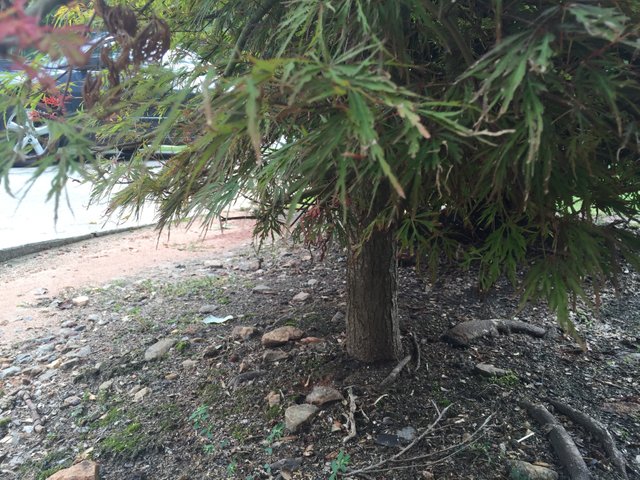
very cool I may try this, does it only work with tree types? I am in New England USA and I want to try and grow things in the winter in the house. Thanx and Blessed BE
First off, If you want, I still need a winner for THIS POST if you are interesting in identifying the other wild edible in Picture 3 for that post, I'll transfer you 1 Steem. Secondly, Other plants can also be grafted. It is best to graft in the winter or early spring when plants are dormant, but you can attempt it at other times too. You can also check out my other plant propagation posts for some great ideas. Did you have any specific plants in mind?
Disregard previous comment. Five steemians have already won the contest. Thanks.
Ive only seen my pops do an apple tree graft once so this was informative. I like that you threw the patent aspect in there. Its true. Plant people get touchy about their creations.